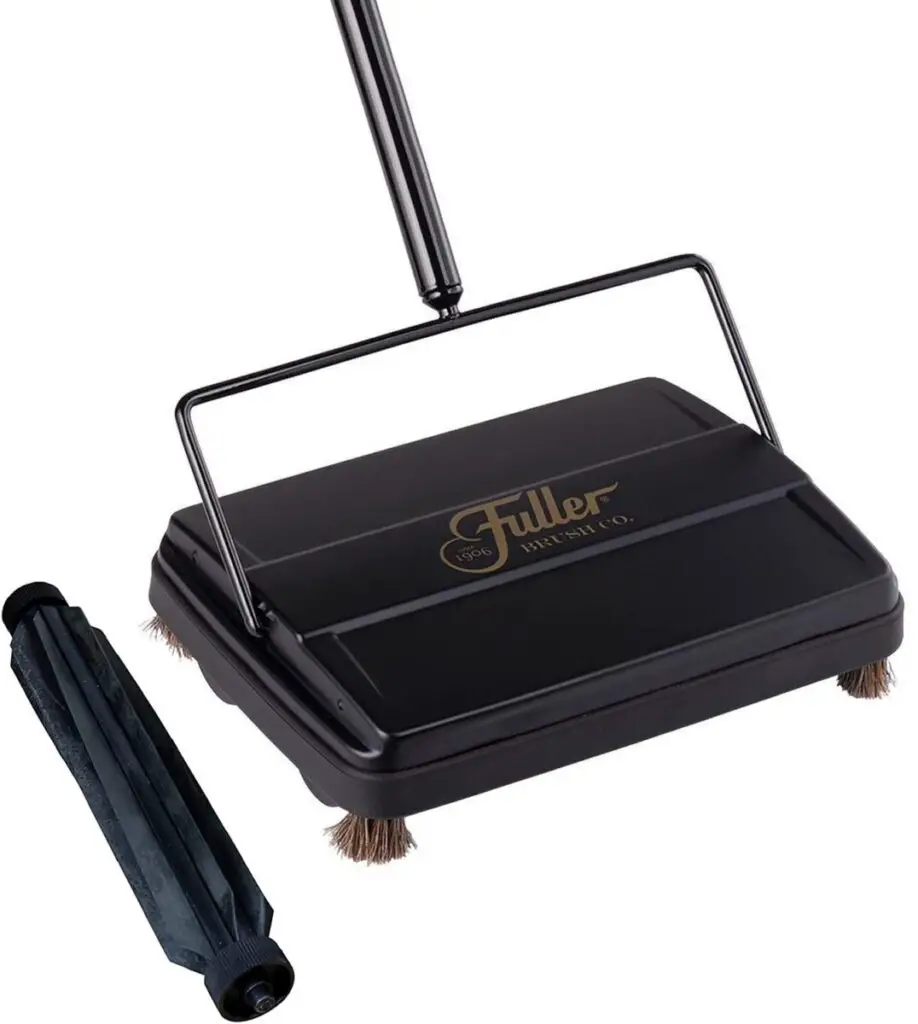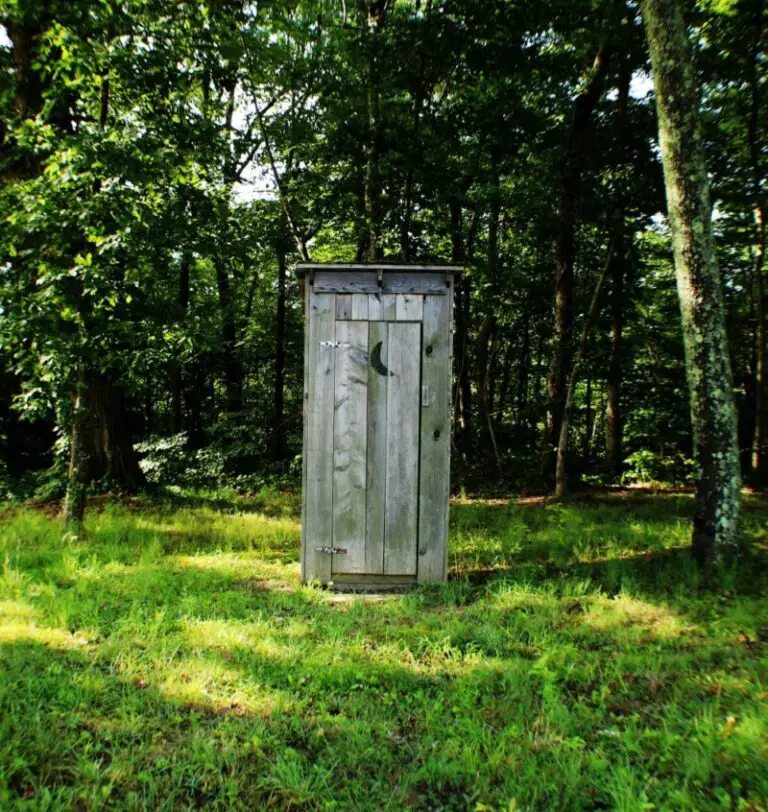Off-Grid Laundry: A Detailed Guide
Most of us would consider a washing machine as an essential item of everyday life. But, when living off the grid, you may have to get creative and think outside of the box.
You have several options when it comes to doing your laundry off-grid. There are washing machines that can be powered using your solar power or generator, or you can do it by hand.
There are other ways to do the laundry too, and some top tips and equipment that can make life easier as well as getting the job done.
Washing Machines
Having a machine to do the laundry for you is undoubtedly still an option when you live off-grid. It does, however, require a bit of thought, planning and setup and can vary depending on which of the following options suits you best:
Running a standard washing machine off an alternative power supply

A standard washing machine running off alternative power is the most comparable substitute for the kind of laundry set up you might have grown used to living on the grid. However, standard washing machines can consume a lot of power. They also generally require an AC power supply because they are designed to be used in homes where they are plugged into the mains supply.
If you are concerned that your solar panels might not meet the demands of a regular washing machine, then a low-power, energy-efficient washing machine could be the answer. The Energy Star scheme is a great tool for identifying low power appliances. Finding a washing machine that has an Annual Energy Use of 100 kWh/yr or less will significantly reducing the drain on your power supply.
Standard washing machines plug into a standard AC home socket. The power generated from solar panels is DC, and therefore you will need to use a DC to AC inverter to run your standard washing machine from this alternative power. The likelihood is that if you are using solar panels to power your house already, you have this all in place, but it’s worth remembering if you are just starting out.
Off-grid washing machines
Unlike a standard washing machine, an off-grid washing machine is designed to run off an alternative power supply. Therefore, these machines can be a good option if you don’t have your full power conversion for your house or you are in an RV, boat or tent. Although some still have a standard plug and so need an inverter to convert DC power from a solar panel.
Off-grid machines tend to be smaller than standard washing machines and use significantly less power. You will often see them advertised as portable or mini washers, which can mean they are not suitable for a full week’s laundry, but if you don’t mind washing regularly, it could be a suitable compromise.
Non-electric machines
The Wonder Wash laundry alternative and other products of a similar design principle have become very popular, especially with campers, as it packs up and fits nicely in your RV. It is operated via a hand crank, so no electricity is required, although it recommends using hot water for your wash if possible.
The Wonder Wash can take up to five pounds of laundry in one wash, which, as many reviewers state, is more than they anticipated. But it would still probably require you to do multiple loads to fulfill all your laundry needs, especially if there is more than one of you in your household.
It is, however, an excellent option for your small loads or when you need to get some essential items washed quickly in between your main laundry days.
Get your Wonder Wash at Amazon.
Washing by hand

If none of the machine options really work for you, or you just have too much laundry to get through to use one of the non-electric machines, then washing by hand is worth considering. Washing your laundry by hand might feel like a step back into the dark ages, but it is a perfect way to get your laundry done in a sustainable way:
- You can be much more economical with your water because you can see how much you need depending on the size of your laundry load. Plus, you can recycle it afterward.
- If you give it a bit of energy, you can turn it into your workout for the day.
- You end up making less laundry in the first place because you know all the work involved in getting it clean!
Must have equipment
There are lots of pieces of equipment out there these days that can make washing your laundry by hand a lot easier and make sure you get it super clean. This is what you need:
Various size tubs/buckets – get yourself a range of sizes of buckets or tubs that you can switch between depending on the size of your laundry load. You could always recycle some old plastic containers if they are nice and sturdy.

Plunger – the plunger is key as far as I am concerned. They were invented in the 1800s and were clearly so good at the job the design has hardly changed. They are basically a long wooden or aluminum pole with a large metal or plastic cone on the bottom.
Inside the cone is a perforated layer which, when it is pushed up and down in the water, helps to agitate and aerate the water. This helps to work any dirt and debris off your laundry in the way that a washing machine turning round and round does.
Using a plunger seriously cuts down on the amount of physical effort you have to put into scrubbing your laundry. The long handle also means you are not bending over for ages, so less opportunity for backache, and as your hands aren’t in the water for hours either, less chapped, or cracked skin!
Get your mobile plunger from Amazon.

Washboard – another historic piece of equipment but one that is still very useful. The best are made with a wooden frame and a galvanized steel board. The galvanized steel won’t rust with it getting wet. Use the washboard for really stubborn stains or dirt. Just rub the wet item up and down on the board to work out the dirt.
Check the latest price of this washboard at Amazon.
Top Tips
Using rainwater for your wash
Rainwater is an excellent option for your laundry. By nature, it is soft and has fewer harsh minerals in it that can contribute to the wear and tear of fabrics helping your clothes to last longer. It will also mean you need significantly less detergent than if you were using tap water.
Related reading: How to get an off-grid water supply without a well.
Choose the right detergent to allow you to reuse your greywater
Many regular laundry detergents contain substances like salt, bleach or boron, which, of poured onto plants, can stop them from growing effectively. Making sure that you use natural detergent means you can reuse the greywater from your laundry wash to water your plants or veg.
Take a look at The Complete Guide to Off-Grid Wastewater Management for more information about greywater and some recommendations for great products.
Water temperature
We often think that we need to do our laundry in hot water, but actually, tepid or even cold water is absolutely fine.
The process
Step 1 – Even when washing by hand, it is a good idea to separate out your colors. While this might mean you do two washes instead of one, it saves all of your laundry from ending up looking the same shade of beige.
Step 2 – Choose your tub relevant to the amount of laundry you have to do. You want to be able to cover the clothes or sheets with water entirely while still leaving enough room at the top of the tub to prevent water spilling out when you move the clothes about.
Step 3 – Put your laundry into the tub and then add the water. Doing it this way round prevents you from overflowing the tub, wasting water and from getting soaked!
Step 4 – Add your detergent following the amount advised on the product. Then, get in there with your plunger. Start gently at first, getting all the laundry fully submerged and mixing the detergent thoroughly through the water.
Step 5 – As you work the plunger up and down, you will start to see the dirt come out of the laundry, discoloring the water. This step can take some time; think about how long your washing machine cycle can be/ This is where I get some music on and work my plunger to the beat – it is a job that has to be done so you might as well enjoy it!
Step 6 – For any stubborn marks or stains, rub the affected area on the washboard to work out the dirt.
Step 7 – Once you think you have given everything a good wash, tip the water out of the tub, saving it or putting it directly onto your plants. Using the plunger or your hands, hold the laundry to one side in the tub to let any excess water flow away.
Step 8 – The rinse. Refill the tub with water, no detergent this time. As the laundry is already wet you don’t need to worry about over filling. Rinse your plunger and work the laundry thoroughly again. Depending on how much laundry you are washing, and what items there are in it, you may need to do the rinse more than once until the water is clear and no detergent residue is left.
Step 9 – once you have drained off the last of your rinse water, you will be left with a tub of freshly washed laundry. The next step is getting it dry.
Drying
One of the hardest parts of the laundry cycle is not the washing of items but often getting them dry. Washing machines hugely help us out but having a spin cycle incorporated into their program, which means by the time you unload the laundry, it has already hard the majority of the water spun out of it. But by the end of a hand wash, you are left with a pile of clean, but wringing wet laundry.
There is quite a bit of debate as to whether you should wring out your laundry or squeeze out your laundry.
Wringing out is where you use a twisting motion to squeeze the water out:
CONS of wringing
– it can cause the item to become misshapen
– it can break the fibers in the fabric
– it can cause the item to wear more quickly
PROS of wringing
– it can be a far more effective method of removing water from your laundry
Squeezing out is where you squeeze water out without twisting:
CONS of squeezing
– less effective at removing water
– reliant on your own level of hand pressure
PROS of squeezing
– you can fold the item to enhance the effect
– items tend not to get misshapen
– less damaging to the fibers of the fabric
– does not add so much to the wear and tear an item
Whichever method you use, both wringing and squeezing by hand have their limitations and are reliant on you still having enough energy and strength to do it after your boogie at the washtub!
Getting yourself either a powered spin dryer to run off your own power supply or a hand-operated spinner – basically a bigger version of a salad spinner! – can really help just getting that bit of extra water out of the clothes before you hang them out to dry. Hand operated spinners won’t necessarily handle big items well, but they will make a great difference when doing your clothes, cloths, underwear or socks.

The Laundry Pod is a well-known example of a hand-operated spinner. Check out the latest price on Amazon.
Getting a dryer that only spins the laundry, rather than heating it as well, uses less power but is still really effective at getting everything to the point it will easily dry on a line.
Another excellent portable spin dryer can be seen on Amazon from Panda.
Line drying…

Hanging your laundry out on the line might seem like a no-brainer, but there are some easy tips to follow to make life easier, ensure good drying and, significantly, cut down on or even cut out the need for pressing.
- Make sure your line and pins are clean before you use them. Wiping them down regularly will prevent them from leaving any dirty marks on your clean laundry.
- Shake each item really well before putting it on the line to ease out any creases. Use your hands and fingers to press hems and plackets that tend to spring out. Even smoothing a collar when it is damp can prevent the need to press it when dry.
- Don’t fold towels or sheets over the line; pin them out on the edge to allow the air to flow over the whole thing.
- Pin dress trousers by the hem, but only on one side to allow the air to flow into the leg. This will speed drying. Pressing your side seams together when damp will also form your front and back creases without the need to press.
- Hang button-down shirts as though it were buttoned using a pin to hold the center together. Don’t actually button it up as this will increase drying time.
- Once your laundry is dry, fold or hang straight away. For clothes that you would usually put away in your closet, trying drying them on their hanger, then they can go straight away without the risk of them creasing.
Laundromat

Now, this one is likely to cause controversy, but in researching this article, I have discovered that a lot of off-gridders actually take their laundry to the laundromat! It is an option that does not have any of the outlay costs of the machine or handwashing solutions, and the argument goes that it does not consume any of YOUR power in the process, so you can still consider yourself living off the grid.
Conclusion
Doing the laundry is always going to be a part of everyday life. As such, there are various options for doing your laundry off the grid that will suit a variety of off-grid lifestyles. If you are well established and know what you are doing when it comes to the power supply and current variation, then a machine option will get the job done with minimal fuss.
However, the low-tech handwashing alternative can serve just as well. With the right equipment, you can make it an inexpensive, swift, satisfying, and even fun process perhaps one the whole family can get involved with.
My Off-Grid Product Recommendations

Useful Book: Off Grid Living 2022-2021 – This incredible step by step guide is a great read and gives you useful information about reaching self-sufficiency in just 30 days. Get the paperback on Amazon or read it free with a Kindle Unlimited subscription or listen to the audio version with Audible Plus membership.

Small Solar Panel Systems: Silicon Solar – This is an excellent company that offers lots of products to get you started on your solar journey. Visit Silicon Solar.

Family Water Filter: Big Berkey – For a fast, affordable water filter with no plumbing required, you can’t beat a Big Berkey gravity-fed filter like this one from Amazon.

Canning Equipment – This canning starter kit, 22-quart Barton pressure canner and twelve-pack of Ball 16oz mason jars will help you preserve food as you work towards self-sufficiency.

Cleaning: Fuller Carpet Sweeper –. This carpet sweeper is an ideal way to keep your home clean without using up your energy stores on vacuuming.

Handy Knife: Gerber Serrated Paraframe – This handy all-purpose knife is lightweight and ideal for all those little jobs around your home and garden.
Related Reading
If you’re looking for tools, equipment or reading materials, I have some other articles that you may find useful:







